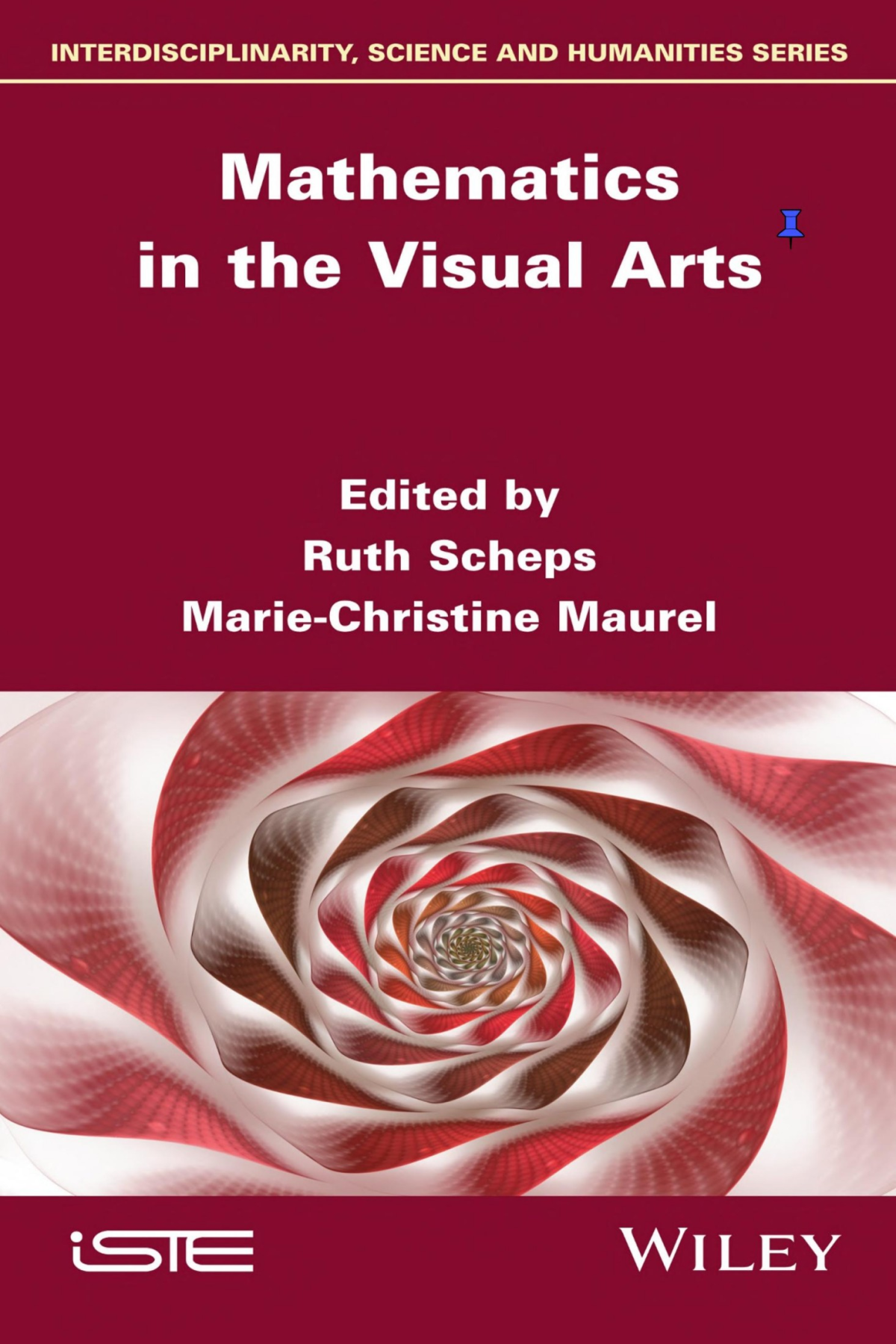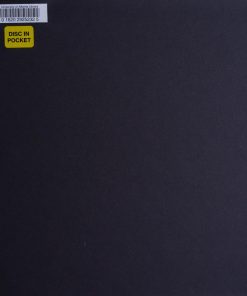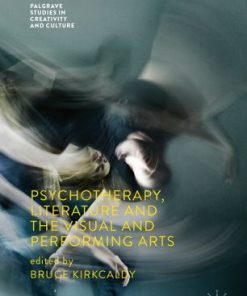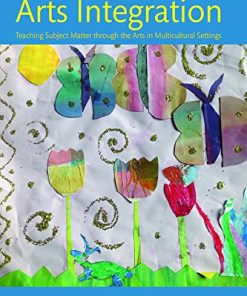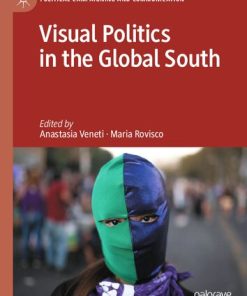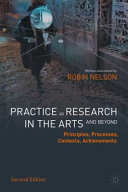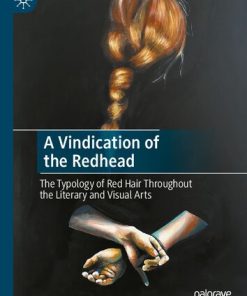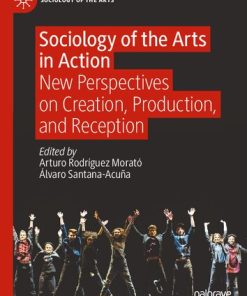Mathematics in the Visual Arts Ruth Scheps
$50.00 Original price was: $50.00.$25.00Current price is: $25.00.
Mathematics in the Visual Arts – Ebook Instant Download/Delivery ISBN(s): 9781119801788,1119801788

Product details:
- ISBN-10 : 1786306816
- ISBN-13 : 978-1786306814
- Author(s): Ruth Scheps, Marie-Christine Maurel
Art and science are not separate universes. This book explores this claim by showing how mathematics, geometry and numerical approaches contribute to the construction of works of art. This applies not only to modern visual artists but also to important artists of the past. To illustrate this, this book studies Leonardo da Vinci, who was both an engineer and a painter, and whose paintings can be perfectly modeled using simple geometric curves. The world gains intelligibility through elegant mathematical frameworks – from the projective spaces of painting to the most complex phase spaces of theoretical physics.
A living example of this interdisciplinarity would be the sculptures of Jean Letourneur, a specialist in both chaos sciences and carving, as evidenced in his stonework. This book also exemplifies the geometry and life of forms through contemporary works of art – including fractal art – which have never before been represented in this type of work.
Table contents:
Chapter 1 Infinity of God and Space of Men in Painting, Conditions of Possibility for the Scientific Revolution 1
Giuseppe LONGO and Sara LONGO
1.1 A brief introduction to infinity 1
1.2 Infinity in painting and the invention of mathematical space 2
1.3 Geometrical optics and the subject in projective space 8
1.4 The limit of time, calculus and algebra 16
1.5 Rational spaces: from trade to physics 18
1.6 Setting a priori conditions of representation and knowledge 20
1.7 Spaces of possibilities for the evolution of life? 23
1.8 Conclusion and opening: heterogeneous spaces of biological evolution 25
Chapter 2 Geometry and the Life of Forms 29
Ruth SCHEPS
2.1 Introduction 29
2.2 Taking form 30
2.2.1 Early geometries 30
2.2.2 Geometrizing complexity 31
2.2.3 Morphogeneses 35
2.3 Art and geometry 37
2.3.1 Geometric art before its time 37
2.3.2 From geometric abstraction to digital art 38
2.3.3 Three legatees of geometric art 42
2.4 Beyond geometry 46
2.4.1 Quantic and cosmic 47
2.4.2 Outline and content 49
2.4.3 From form to the sublime 50
Chapter 3 Among the Trees: Iterating Geneses of Forms, in Art and Nature 53
Giuseppe LONGO and Sara LONGO
Chapter 4 The Passion of Flight: From Leonardo da Vinci to Jean Letourneur 63
Bruno CHANETZ
4.1 Introduction: from legend to reality 63
4.2 Leonardo da Vinci and the basis of the theory of flight 64
4.2.1 Chief engineer to Francis I of France 64
4.2.2 The flying propeller 65
4.2.3 Flapping-wing flight 67
4.2.4 Why can’t man fly like a bird? 68
4.2.5 The basis of Leonardo da Vinci’s theory of flight 69
4.3 Pioneers of the air and the first fluid movement visualizations 70
4.3.1 Clément Ader (1841 – 1925), a distant successor of Leonardo da Vinci, invents the aeroplane 70
4.3.2 The oil king presides over the surge in flight 71
4.3.3 From Magnus to Lanchester: the difficult gestation of the theory of flight 71
4.3.4 Gustave Eiffel highlights the suction component of lift force 72
4.3.5 Étienne-Jules Marey takes the first images of fluid movement 72
4.4 From Henri Werlé to Jean Letourneur, the sculptor of fluid movement 75
4.4.1 Henri Werlé or “the Master” of ONERA’s water tunnel 75
4.4.2 Jean Letourneur, interpreter of snapshots 77
4.4.3 As the 21st Century dawns, Jean Letourneur gathers momentum 79
4.5 Conclusion 81
4.6 Appendix: additions to the chapter entitled “Why Can’t Man Fly?”, which refers to the article by Marielle Vergès and Kamil Fadel (see footnote 15) 81
Chapter 5 Sculptor of Fluid Movement 83
Jean LETOURNEUR
5.1 References 101
Chapter 6 Internal Geometry of “Salvator Mundi” (The “Cook Version”, Attributed to Leonardo da Vinci) 103
Jean-Pierre CRETTEZ
6.1 Introduction 103
6.2 Distinctive features of the works of Leonardo da Vinci 104
6.3 Presentation of the Salvator Mundi, Cook version 106
6.4 Investigating the compositional mesh 108
6.5 Compositional format 112
6.6 Elements of the internal geometry of the Salvator Mundi, Cook version 112
6.7 A detailed look at the ellipses of the head of the Salvator Mundi 114
6.8 Visual consonance 115
6.9 Properties of the type 1 ellipse 116
6.10 Other applications of the type 1 ellipse 117
6.11 The decoration of two intersecting bands of the stole 118
6.12 The internal geometry of the Salvator Mundi (Ganay version) 123
6.13 Conclusion 125
6.14 References 126
Chapter 7 Internal Geometry of a Night Scene by Georges de La Tour: “The Apparition of the Angel to St Joseph” 127
Jean-Pierre CRETTEZ
7.1 Introduction 127
7.2 Methodology 128
7.3 Distinctive features of the work of Georges de La Tour 129
7.4 Internal geometry of The Appearance of the Angel to St Joseph 130
7.5 The search for the compositional mesh 132
7.6 Compositional format 134
7.6.1 Position of the two protagonists’ heads 134
7.7 The compositional architecture 135
7.8 The ellipse of light 136
7.9 Curved or elliptical forms 137
7.10 Internal geometry of the two protagonists’ heads 139
7.11 Discussion 140
7.12 Compositional construction 141
7.13 Conclusion 141
7.14 References 142
Chapter 8 Emergilience, an Art Research Project 143
Sophie LAVAUD
8.1 Background of the project Emergilience 143
8.1.1 Preamble 143
8.1.2 The artistic challenges 146
8.1.3 A little bit of art history 146
8.2 Description of the Emergilience project 150
8.2.1 A continually developing research in progress 150
8.2.2 What has already been achieved? 151
8.2.3 Future developments 168
8.3 Let us finish with a conclusion that looks to the future 171
8.4 References 173
List of Authors 175
Index 177
People also search:
mathematics in art
mathematics in visual art
mathematics visualized
visual arts and math integration
visual mathematics
visual mathematics pdf
You may also like…
Computers & Technology
Authoritarian Journalism: Controlling the News in Post-Conflict Rwanda Ruth Moon
Relationships & Lifestyle - Diet & Nutrition
Psychotherapy, Literature and the Visual and Performing Arts 1st Edition
Politics
Uncategorized
Politics & Philosophy - Cultural
Mathematics - Computational Mathematics
Uncategorized


